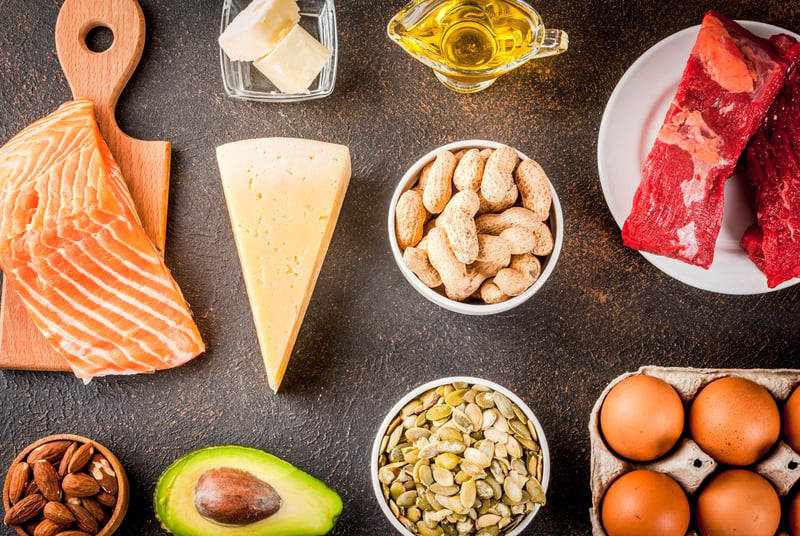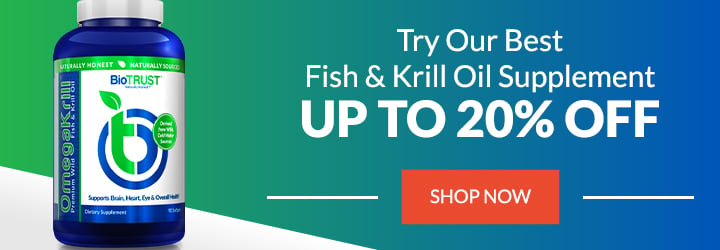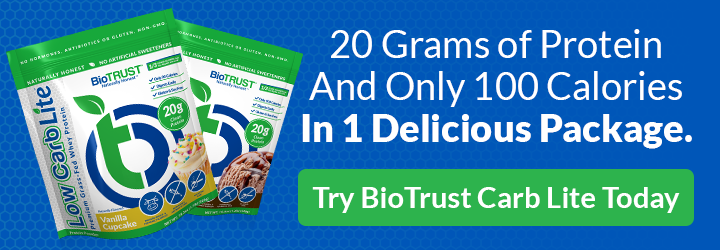Keto Food List: What You Can (and Can’t) Eat on Keto

Confused about making the switch to keto? Not sure what you can eat and what you should avoid? Wondering what is allowed on the keto food list? We’ve got your back.
As a Nutrition and Exercise Coach, I get hit with questions daily, if not hourly, that usually begin with “can I have x, y, or z while following the ketogenic diet?”
Generally speaking, I tend to steer people away from any type of diet or meal plant that restricts them from foods or food groups entirely because I am of the mindset that your diet should consist of foods that fuel you, and you should eat to live, not live to eat. However, I also understand there are numerous folks out there who would argue that some of the popular and trendy diets such as the ketogenic diet have many benefits that cannot be overlooked.
So, what exactly is the ketogenic diet? You can check out our beginner’s guide to the ketogenic diet here.
Essentially, the ketogenic diet is a very-low-carbohydrate, high-fat, moderate-protein dietary approach. It’s more commonly referred to as a very-low-carbohydrate ketogenic diet (VLCKD). Or “keto” for short.
With this being said, can you eat the following…

Keto Food List: What You Can (and Can’t) Eat
Meat?
Yes. Stick with red meat, steak, ham, sausage, bacon, chicken, and turkey.
Fish?
Yes. Opt for fattier fish like salmon, trout, tuna, and mackerel.
Eggs?
But of course. And when you do, it’s best to look for pastured or omega-3 whole eggs.
Butter?
Yes, and with a side of cream, too, please. Look for grass-fed whenever possible.
Cheese?
No keto food list would be complete without cheese. Unprocessed cheeses, such as cheddar, goat, cream, blue, or mozzarella, are some of your best options.
Nuts and Seeds?
You can’t go wrong with these. Almonds, walnuts, flaxseeds, pumpkin seeds, chia seeds, etc., will be a staple on your shopping list.
Oils?
Yep. I would primarily recommend you use extra virgin olive oil, coconut oil, and avocado oil. And watch out for old, rancid oils. It’s best to buy smaller bottles of oil (in darker glass) to ensure you use them before they start to go bad.
Avocado?
This would be a big, fat Heck Yeah! Whole avocados or freshly made guacamole are where it’s at.
Vegetables?
This one is a little bit tough. If you’re following the keto diet, you’ll want to stick with your lower carb, high protein vegetables like spinach, asparagus, cauliflower, broccoli, kale, green beans, zucchini, cabbage, celery, brussels sprouts, tomatoes, eggplant, mushrooms, and peppers. On the other hand, there are higher carb vegetables you’ll want to avoid or at least strictly limit, such as root vegetables like potatoes, sweet potatoes, parsnips, green peas, and corn.
Condiments?
Steer clear of ketchup and barbecue sauces which are loaded with sugars and carbs. Instead, opt for healthy lower carb options like salt, pepper, and various healthy herbs and spices.
Sodas/Diet Sodas?
Should anybody really be drinking soda or diet soda? While soda would not fit into the guidelines, diet soda may fit into the guidelines, but it may also trigger your sweet tooth and increase your desire to eat or drink sugary foods. In addition, diet sodas can also have a negative effect on gut health, glycemic control, and your metabolism.
Protein Shakes?
Only if they are BioTrust Nutrition. I am only half kidding. But when you are including protein shakes and smoothies in your diet, you will want to be sure to include healthy sources of fats along with these such as MCT oil or coconut oil, and I even add avocado, heavy cream, mascarpone cheese, or sour cream, along with nuts and seeds.
For more tips on what you can and can’t eat on the ketogenic diet, check out our keto diet tips podcast.
If you have any specific foods or beverages you would like to know about, post them in the comments below, and we’ll let you know whether or not they can be found on the keto food list.







